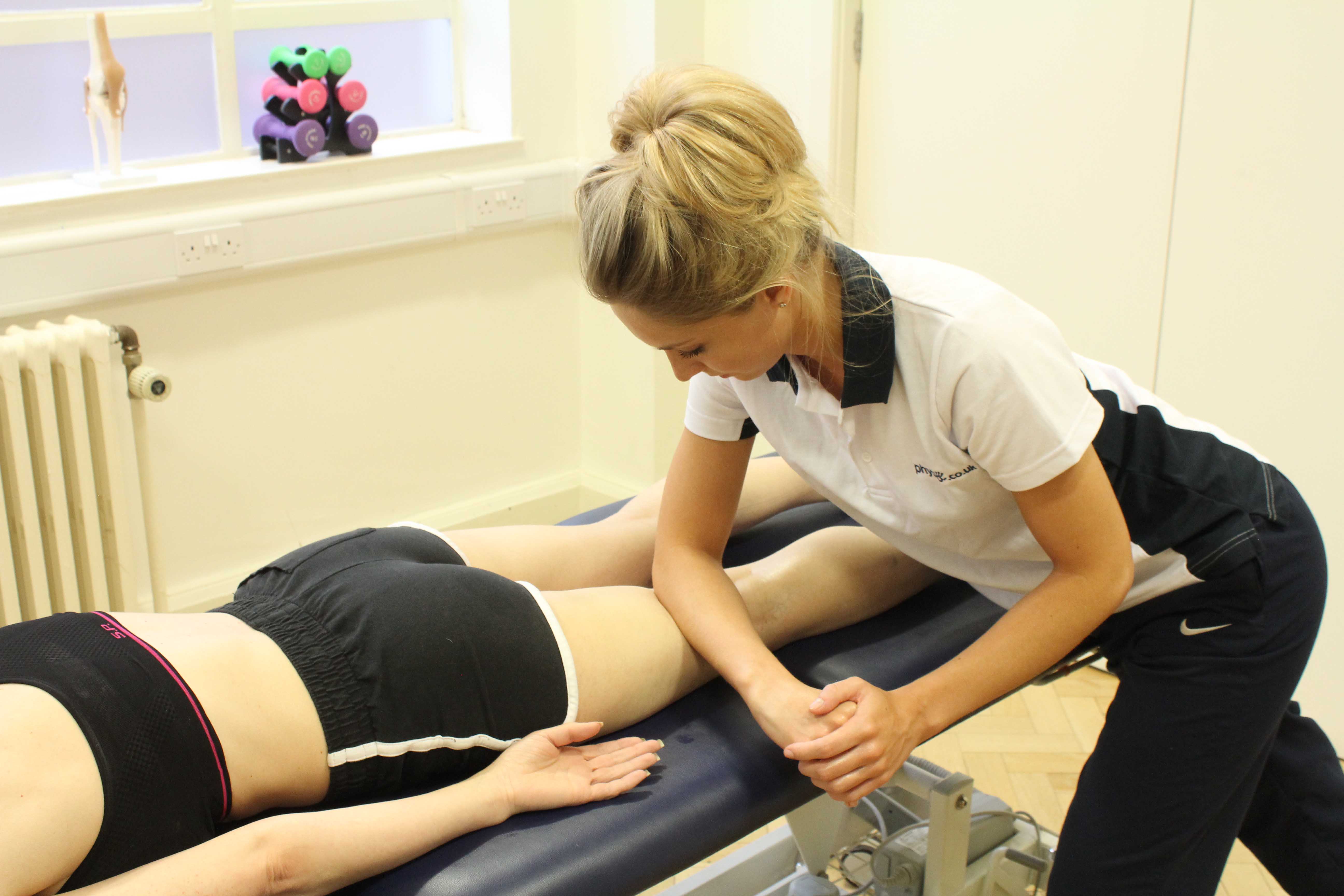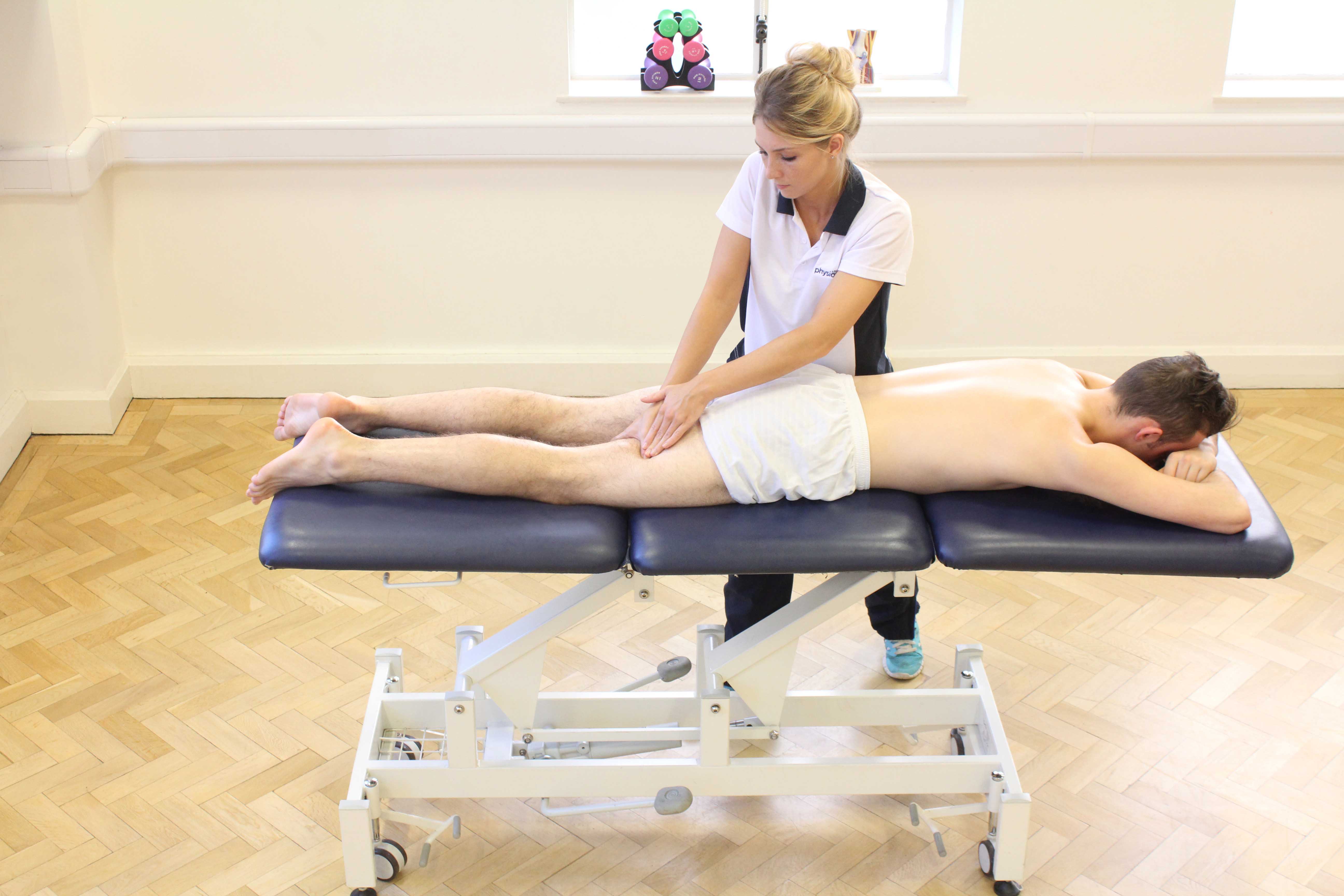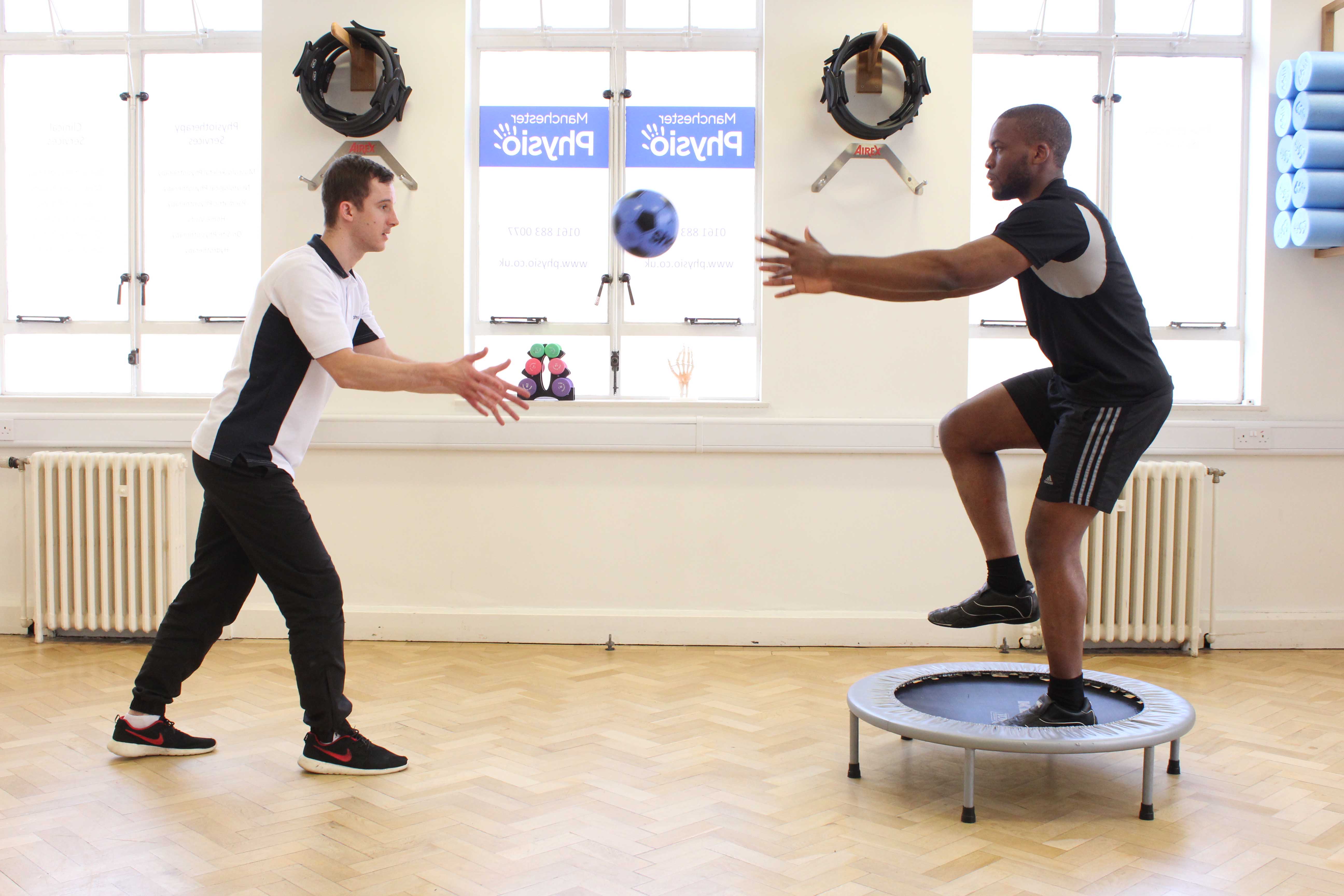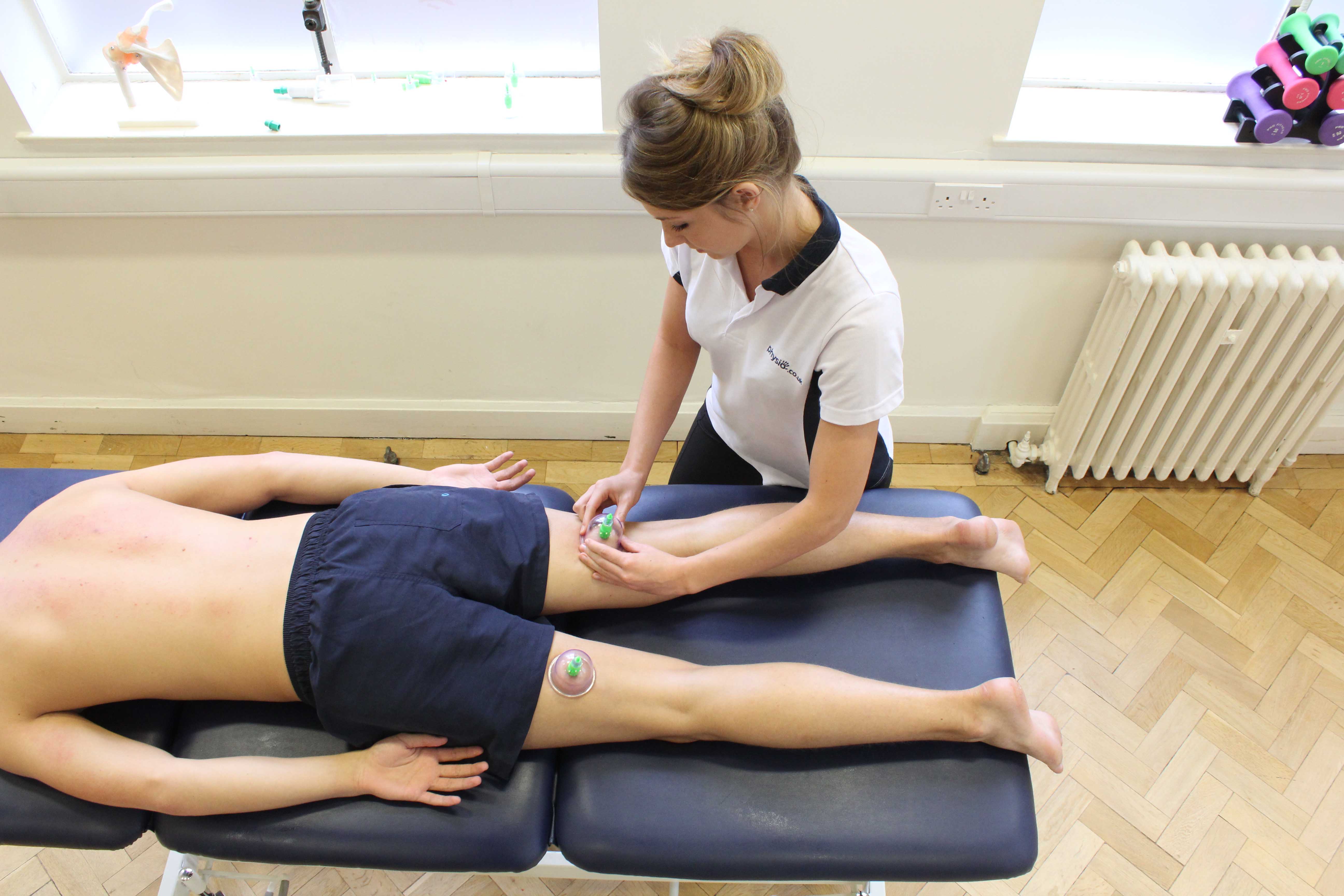What is a ruptured hamstring?
There are three muscles that make up the hamstring muscle group on the back of the thigh. These include the biceps femoris, semitendinosus and semimembranosus. A complete tear in any of these muscles is known as a ruptured hamstring. A physiotherapy programme should be followed if you have a ruptured hamstring.
 Above: Deep tissue massage of the hamstring muscles by experienced therapist
Above: Deep tissue massage of the hamstring muscles by experienced therapistHow does a ruptured hamstring happen?
Sports that involve sprinting actions are the most common cause of a ruptured hamstring. This includes football, rugby and hurdles. These movements involve strong contractions of the hamstring muscle group and therefore increase the risk of injury.
What are the symptoms of a ruptured hamstring?
You may experience a ‘pulling’ or ‘tearing’ sensation when you rupture your hamstring. As a result of this, you may be restricted in some of your movements and you could find it difficult to continue with some of your everyday activities. Other symptoms include:
What should I do if I have a ruptured hamstring?
You should apply ice to the injured area during the first 48 hours as this will help to reduce your pain and swelling. You can also apply compression to the back of the thigh in the form of a bandage which will further reduce any swelling. It is important to see a physiotherapist as soon as possible to optimise your recovery.
 Above: Trigger point massage of the hamstring muscles by an experienced MSK therapist
Above: Trigger point massage of the hamstring muscles by an experienced MSK therapistWhat shouldn’t I do if I have a ruptured hamstring?
Do not ignore your symptoms or try to continue with your normal activities of daily living. This will make your symptoms worse and could delay your rehabilitation. Any activities that increase the local blood flow to the area should also be avoided. This may include hot baths or showers, massage, heat rub and excess alcohol.
Physiotherapy treatment for a ruptured hamstring.
The treatment for ruptured hamstrings will depend on the nature of your injury and your goals. Your physiotherapist will work with you to create a tailored treatment programme following your initial assessment. Physiotherapy options may include:
 Above: Progressive leg strengthening exercises supervised by specialist MSK therapist
Above: Progressive leg strengthening exercises supervised by specialist MSK therapistCould there be any long-term effects from a ruptured hamstring?
Most hamstring ruptures can be treated conservatively (without surgery). However, if the injury is too severe, it may require surgery as part of the rehabilitation procedure. Physiotherapy is still an important part of your recovery and should begin immediately after your operation.
 Above: Cupping massage technique applied to the hamstring muscles by specialist therapist
Above: Cupping massage technique applied to the hamstring muscles by specialist therapistTo arrange an assessment with a specialist physiotherapist call Physio.co.uk on 0330 088 7800 or book online.

 0330 088 7800
0330 088 7800

































